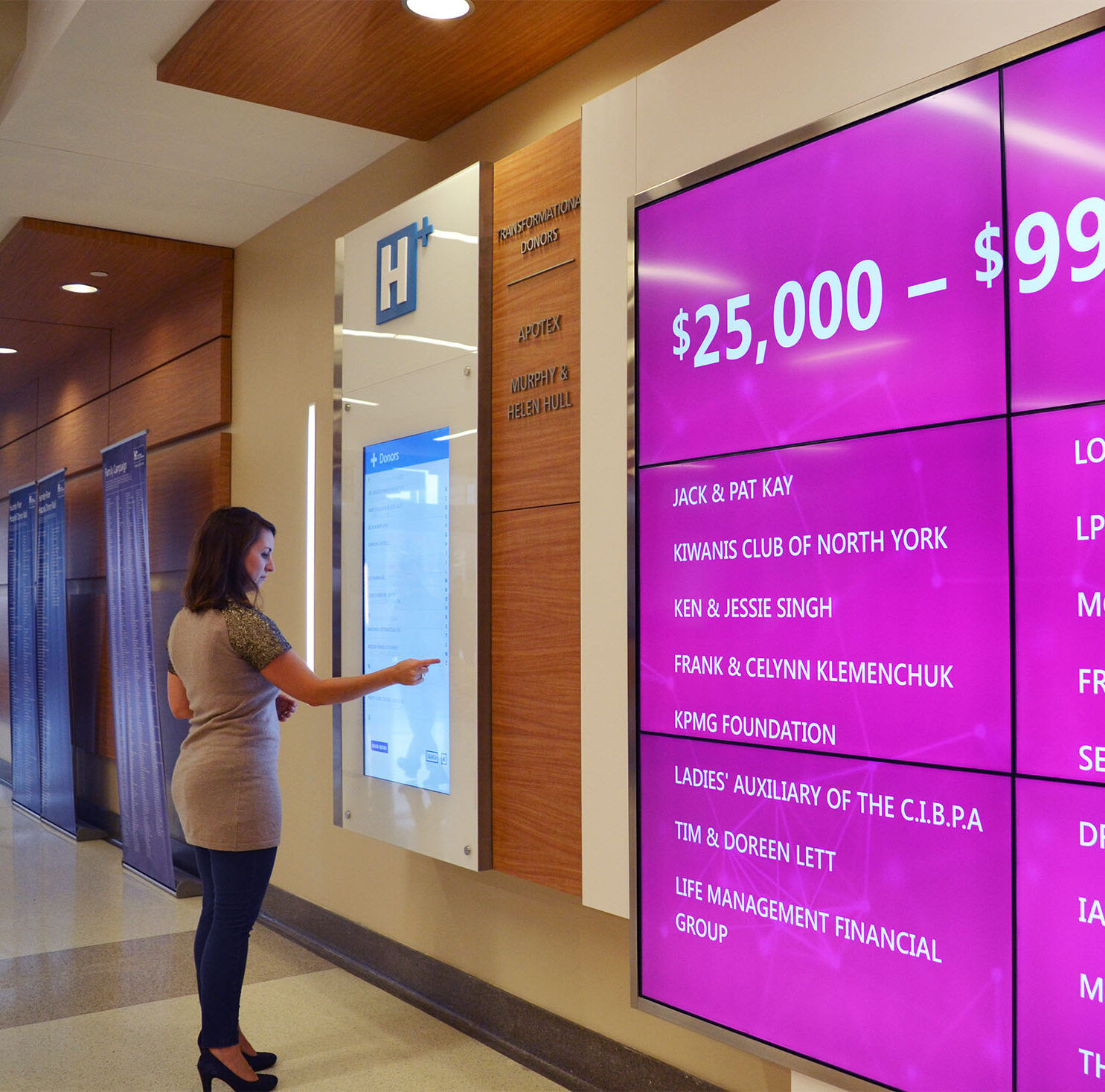In the ever-evolving landscape of philanthropy, Digital Donor Recognition Walls have emerged as a cutting-edge solution for acknowledging and celebrating the contributions of benefactors. Whether you’re a nonprofit organization, educational institution, or any entity reliant on donor support, understanding the ins and outs of Digital Donor Recognition is crucial. Here’s everything you need to know about these innovative displays.
1. What is Digital Donor Recognition?
Digital Donor Recognition involves the use of digital displays, often in the form of interactive walls or screens, to showcase and honor the individuals or entities that have made significant contributions to a cause. Unlike traditional static donor plaques, these digital walls offer a dynamic and engaging way to recognize donors.
2. Key Features of Digital Donor Recognition Walls
- Dynamic Display:
Digital Donor Recognition Walls can dynamically showcase various donors and contributions, creating an ever-changing and visually appealing acknowledgment platform.
- Real-time Updates:
The ability to provide real-time updates ensures that donors receive immediate acknowledgment for their contributions, fostering a sense of appreciation and connection. - Customization:
Digital displays allow for extensive customization, enabling organizations to tailor the recognition experience to their specific needs, including personalized messages and donor achievements. - Interactivity:
Unlike static displays, digital walls can incorporate interactive elements such as touchscreen capabilities, multimedia content, and interactive maps, creating a more engaging and memorable experience.
3. Advantages of Digital Donor Recognition
- Enhanced Visibility:
Digital displays inherently attract attention, ensuring that donor contributions are prominently featured and garner the visibility they deserve. - Space Efficiency:
Digital displays eliminate the physical space constraints associated with traditional plaques, offering a space-efficient alternative for organizations with limited display areas. - Cost-Effective:
Digital solutions can be more cost-effective in the long run, as they eliminate the need for the production and installation of physical plaques, along with the costs associated with updates. - Data Analytics:
The digital nature of these recognition walls allows for the collection and analysis of data, providing valuable insights into donor engagement, preferences, and trends for strategic decision-making.
4. How to Implement Digital Donor Recognition
- Assess Needs:
Determine the specific needs and goals of your organization to tailor the digital recognition experience accordingly.
- Choose Technology:
Select the appropriate technology, whether it’s interactive screens, digital displays, or a combination of both, based on your organization’s requirements. - Content Strategy:
Develop a content strategy that effectively communicates the impact of donor contributions and aligns with the organization’s mission and values. - Maintenance and Updates:
Establish a plan for regular maintenance and updates to keep the digital donor recognition wall current and reflective of ongoing contributions.
5. Considerations for Successful Implementation
- Accessibility:
Ensure that the digital display is accessible to a wide audience, taking into account factors such as location, visibility, and ease of interaction.
- Integration with Fundraising Efforts:
Integrate the digital donor recognition strategy with ongoing fundraising efforts to create a seamless and cohesive donor experience.
Conclusion: Embracing the Future of Donor Recognition
In conclusion, Digital Donor Recognition Walls represent a transformative approach to acknowledging and celebrating donor contributions. By leveraging the dynamic and interactive features of digital displays, organizations can create a more engaging and impactful experience for donors while maximizing visibility and efficiency. As technology continues to advance, embracing digital donor recognition is not just a modernization of tradition but a strategic move towards enhancing donor relations and ensuring a lasting legacy of support.
